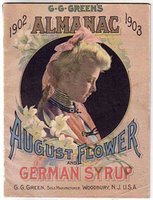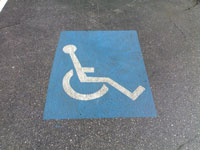Although it's been a very quiet scuffle as far as blogger disagreements go, there's been a bit of a dust-up among disabled bloggers recently. It's been so quiet that it's impossible to tell how many people know about it, have strong opinions about it, or are effected by it, specifically.
Generally speaking, the issue is about disability hierarchy, or judgments disabled people place upon other disabled people regarding their abilities and inabilities. I suppose this kind of ranking is human nature since it happens within the black community according to skin shade and within the GLBT community with regard to how closely individuals meet gender binaries (male, female; likes men, likes women).
One type of disability hierarchy relates to types of impairments. Basically, among the obviously disabled, people with spinal cord injuries rank higher than folks with congenitally-caused conditions, intellectual or developmental impairments, and mental illnesses -- and the less-paralyzed the better for SCIs as well. The more normal the body (and behavior) the higher you rank; the less drooling, spasticity, deformity, etc., the higher you rank.*
Unless you're normal enough to pass as nondisabled, and then it gets tricky. The misleading idea that ability and disability make up a binary situation leads to questions of whether or not an individual is truly impaired or disabled. At what point is one legitimately disabled? How can you tell who's a fake? What if your condition is intermittent or varies daily? How much of a developmentally-impaired individual's behavior is abnormal and how much is just not accepted by a narrow-minded public? Are you still disabled if your bipolarism is controlled by medication? If your prosthetic limb works so well no one would know that it's underneath your pant leg, do you qualify or not?
These aren't just arbitrary questions. Much of it has been written into law as if there are definitive answers, and people qualify for assistance of various kinds depending on the legal ruling. Besides personal identity, there's a lot of money and some legal rights at stake. These legal determinations bleed into social interaction and voilà -- disabled people (as well as the general public) end up thinking within the binary system. You're either disabled, or you're not.
About a week ago,
WheelchairDancer responded to an article she'd read in the
NYT, written by someone with troubling health issues, declining physical abilities and an illusive diagnosis. While noting the similarities in the
Times story and her own, WCD wrote:
The frightening loss of function continues. I do use a wheelchair, but I didn't END UP there. I embrace my chair as a freeing pair of legs. My condition has not stabilized. I try to walk as little as possible; it's painful and awkward. Walking is reserved for ever shorter distances only. I am being fitted with braces, but we are still trying to figure out which ones are best.
The above caused the disagreement I'm writing about here, though WCD went on in that same post to say:
I go to doctors trying to find out what is "wrong with me." I feel like a puppy coming to a human for food that keeps getting kicked and slapped, but keeps coming back because it has a misplaced faith in human goodness. Why do I do this to myself?
And why do I believe I need a diagnosis? What good would a diagnosis do me emotionally? Since they are already treating symptoms, what good would a diagnosis do me physically? Can there be a cure without diagnosis?
I suspect WCD wrote that post with an exhilaration and relief to see her story mirrored by someone else's. A lack of diagnosis can make a person extremely eager to find connections in others' experiences. I know myself that these connections can make you feel better, safer, less alone. And they can offer hope.
Al Masters of Crip Revolution responded with what might seem like a benign comment:
WCD, Let me make sure I understand...You are disabled to a point that you need a wc, yet do not know why. It seems like the wc is so much a part of your being. Dance, etc. Could you live your daily life without a wc if it was necessary? Maybe I have missed something reading your blog for a long time.
However, it struck a nerve for WCD, and
her next post revealed her inner anxiety:
I KNEW it. I KNEW it. I KNEW I should not have posted yesterday's post. All my self-doubt alarms are going off...
What I hear is:
You aren't truly disabled. You're faking. And, moreover, you have deceived everyone who reads your blog.
I know. He didn't write that. But I hear that. So, let me speak to that weird combination of his/my concerns.
At no point in my blog have I denied that I can walk.
What follows is both her defense of her status as a wheelchair user and some deeply eloquent ruminations on the emotional process of living with a mysterious but progressive physical condition. What she writes resonates strongly for me.
The rest of this disagreement, if it was indeed with Masters, played out privately. But
WCD's third post on the topic announces that
someone(s) finds enough fault with her blogging as a wheelchair user to notify her that she's off their reading list:
I feel like I have laid my very self very bare. I really appreciate the words of support from all of you.
To those you who have let me know by email that they won't be reading any more, thank you for reading -- I guess this is kind of useless because you won't see it. I am sorry you find me not suited to your notions of disabled community any more. I have enjoyed our ethereal contact.
I wasn't aware, myself, that WheelchairDancer could walk, and I'll admit it surprised me. But I think my belief that she only travels by chair was my assumption (and sloppy reading skills) rather than any omission or misdirection by her. The dominant cultural narrative about wheelchair users dramatizes impairment as a sudden and total injury, not an on-going negotiation between energy and ability.
Are you truly disabled if you can walk, but choose to save your energy for something other than the journey from place to place? What if you use a scooter because you're overweight? What if you're overweight and have arthritis? A heart condition? What if you're getting over a bad cold and borrow a scooter at the mall because of residual fatigue? What if WCD's use of the wheelchair remains unchanged but she gets an official diagnosis? What makes wheeling legitimate?
This question of legitimacy comes up publicly. Last year's Ms. Wheelchair Wisconsin had her tiara yanked away when she was seen ambulating in the local paper. Michael J. Fox's true impairments have been widely debated just recently. Stories about actual fakers often make the news.
Legitimacy implies integrity, but the problem is that diagnosis implies legitimacy. Also, full disclosure is demanded since disabled bodies are treated as public property to be stared at and judged. These social conditions to claiming identity isolate and, ironically, disable too.
______________________________________________
*"Ranking" here refers to favorable treatment in the same way that attractive people have advantages less attractive people don't. Generally, men have more social power than women, tall people have more power than short, etc. It's not a literal ranking so much as a class system.









